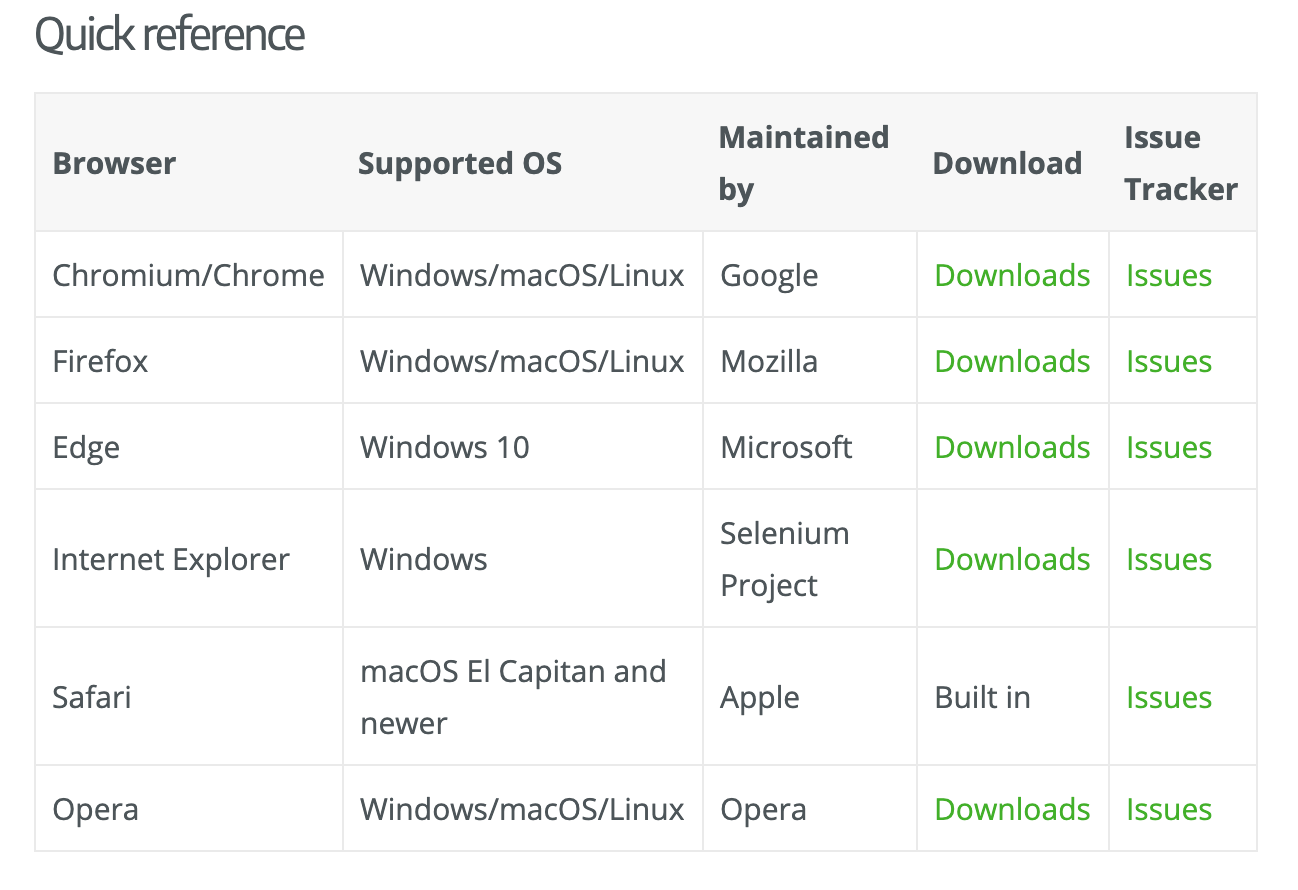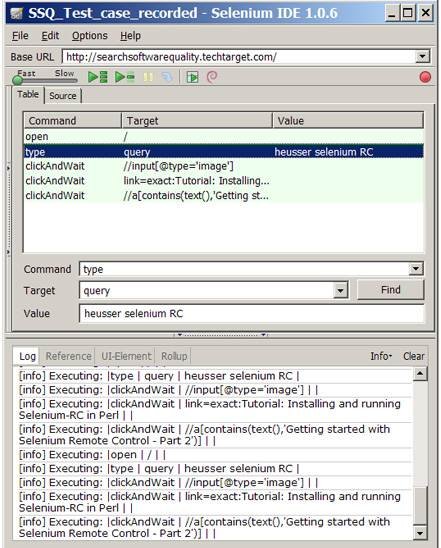
- #Selenium testing tool for mac how to#
- #Selenium testing tool for mac install#
- #Selenium testing tool for mac drivers#
If you don't have an existing release pipeline that deploys your web app: To run Selenium tests in these versions of TFS, you must use the These tasks are not available in TFS 2015 or TFS 2017.

NOTE: This example uses the Visual Studio Test Platform Installer task and the latest See Build and release agents and UI testing considerations. When using a self-hosted agent that you deploy on your target servers, agents must be configured to run interactively with auto-logon enabled.
#Selenium testing tool for mac drivers#
The drivers are not pre-installed on other agents such as Linux, Ubuntu, and macOS agents. The paths to the folders containing these drivers can be obtained from the environment variables named IEWebDriver (Internet Explorer),ĬhromeWebDriver (Google Chrome), and GeckoWebDriver (Firefox). Pre-installed on the Windows agents (agents named Hosted VS 20xx) because they are compatible with the browser versions installed on the Microsoft-hosted agent images. When using the Microsoft-hosted agent, you should use the Selenium web drivers that are
#Selenium testing tool for mac install#
You can deploy and test your app using either the Microsoft-hosted agent in Azure, or a self-hosted agent that you install on the target servers. Decide how you will deploy and test your app To deploy a web app, see Deploy to Azure Web Apps.
#Selenium testing tool for mac how to#
For details of how to set up your own release pipeline The example code above runs tests against. You can use an existing app, or deploy one in your continuous deployment (CD) release pipeline. You'll need a continuous integration (CI) build pipeline that builds your Selenium tests.įor more details, see Build your. Run the Selenium test locally using Test Explorer and check that it works. /information about and functionality for the current test run. /Gets or sets the test context which provides / Summary description for MySeleniumTestsĭriver.FindElement(By.Id("sb_form_q")).SendKeys("Azure Pipelines"), "Verified title of the page") Change the browser assignment in the SetupTestįunction to the browser you want to use for the test. Required to test your web app or website.

Replace the contents of the TheBingSearchTest function That performs a simple test on the website. For example, the following code creates a default class named MySeleniumTests Add the following packages to your project:Ĭreate your tests.

Unit Test project and choose Manage NuGet Open the shortcut menu for the solution and chooseĪfter the project is created, add the Selenium andīrowser driver references used by the browser toĮxecute the tests. Then choose Test and select Unit Test Project. In Visual Studio, open the File menu and choose New Project,

References and enables you run and view the results This automatically adds the test framework Typically you will run unit tests in your build workflow,Īnd functional (UI) tests in your release workflow after yourĪpp is deployed (usually to a QA environment).įor more information about Selenium browser automation, see:Īs there is no template for Selenium testing, theĮasiest way to get started is to use the Unit Test Special considerations that apply when running UI tests are discussed in Topic describes using Selenium to test your websiteĭuring a continuous deployment release and test automation. Unexpected changes, and need not be difficult. Release pipeline is a great way of detecting Performing user interface (UI) testing as part of the Service connections are called service endpoints, In Microsoft Team Foundation Server (TFS) 2018 and previous versions,īuild and release pipelines are called definitions,


 0 kommentar(er)
0 kommentar(er)
